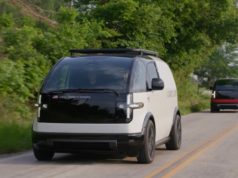During its Shape Tech Expo in San Francisco this weekend, AT&T plans to demonstrate how it is using drones to inspect its cell towers from the air. The company is also looking at other future applications that could include using unmanned aerial vehicles (UAVs) to provide improved LTE coverage during crowded events or disasters.
AT&T has been testing various uses for drones over the past year, and the company is already using the technology to inspect cell towers. Among the other uses AT&T is exploring is the deployment of flying COWs (cell on wings) to enhance cell coverage at concerts or other events where large numbers of users can overwhelm the capacity of stationary towers.
The company’s Internet of Things team and its AT&T Foundry innovation lab have also been working with Intel since early this year to explore other uses for drones. The two firms demonstrated some of their tests at the Mobile World Congress in Barcelona in February.
Laying the Foundation for ‘Exciting Applications’
AT&T has reached a new milestone this week by launching the trial phase of its national drone program, John Donovan, the company’s chief strategy officer and group president of technology and operations, said in a blog post Wednesday.
Using UAVs to inspect cell towers is already enabling AT&T to conduct checks more quickly and safely, “and even access parts of a tower that a human simply could not,” he said. “We anticipate this will allow us to improve our customers’ experience by enhancing our cell sites faster than ever before.”
In the future, tethered drones at crowded concerts could allow attendees to more easily send and receive messages, something that’s often hard to do when stationary cell networks are overwhelmed by high service demands, Donovan said. The company’s current tests are expected to “lay the foundation for new, exciting drone applications.”
Amazon, Google, Facebook Also Testing Drones
AT&T is hardly the only company looking into new uses for UAVs. Amazon CEO Jeff Bezos famously unveiled his company’s plans to use drones for product deliveries during a “60 Minutes” interview in 2013. Shortly afterward, Google revealed that it had successfully tested deliveries using a “Project Wing” drone in a remote part of Australia.
As part of its experimental effort known as “Project Loon,” Google has been deploying high-altitude balloons in different parts of the world with the goal of providing Internet access to underserved regions. Facebook is also testing the use of drones to provide Internet services to areas that are hard to reach with normal cellular technologies.
The Federal Aviation Administration’s new regulations regarding the use of small drones will go into effect on August 29. The rules, which apply to UAVs weighing less than 55 pounds, require operators to always keep such devices within their visual line-of-sight and prohibit the flying of drones over other people or under covered structures.







